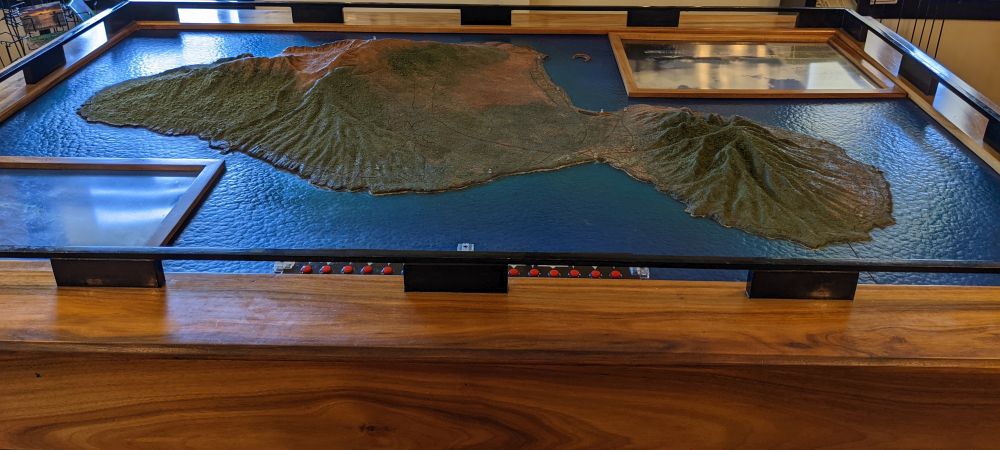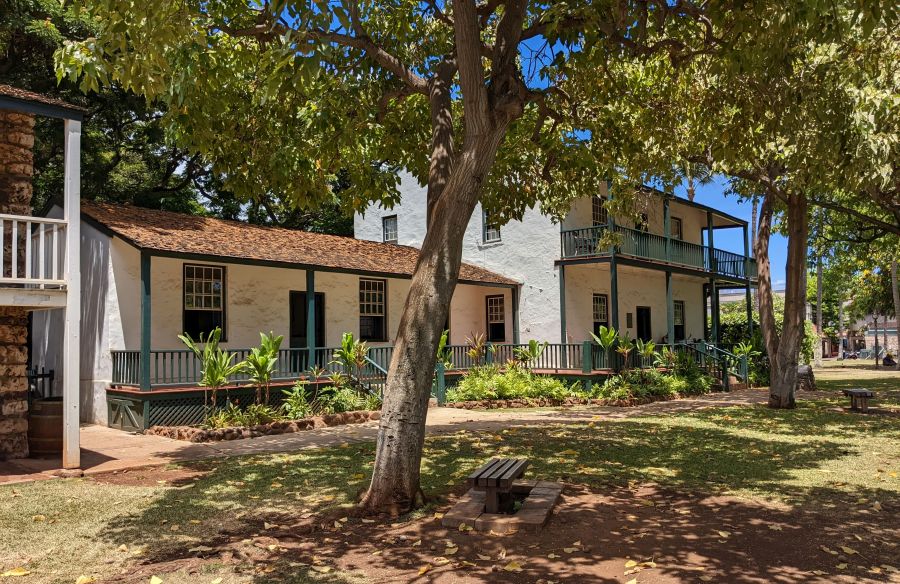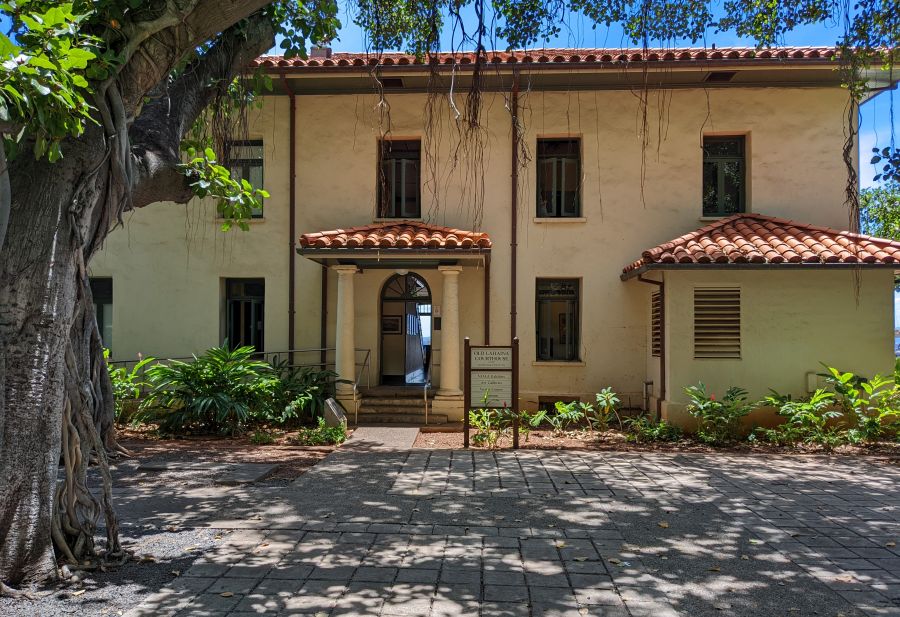
Must-See Maui Museums
Known as The Valley Isle, Maui is the second-largest island of Hawaii and is famous for its spectacular beaches, diverse nature and activities. While spending most of your vacation outside in this tripical paradise, exploring local culture can enhance your experience and make your trip more memorable. Enter Maui museums! Compact and easy to visit, they are full of artifacts and stories about everything that shaped Hawaii as we know it today. Spend 30-60 minutes indoor, between your morning and afternoon activities, and learn about the people, culture, religions and industries of Hawaii.
Visiting a Maui museum can be the perfect activity of your last day in Maui, if your plane leaves late in the day. After you check out of your hotel or vacation rental in the morning, drop off your bags at one of Maui’s luggage storage sites, and spend the hottest time of the day visiting a museum or two.
Alexander & Baldwin Sugar Museum
For years, the Hawaiian Islands have been known for their sugar production. However, in 2016, the Hawaiian Commercial & Sugar ended its operations on Maui and left over 36,000 acres of land to replant. The acreage is owned by Alexander & Baldwin and the company has leased much of it to farmers.
The company promised to make sure the land was used for agricultural use, and they made sure the sugar plantation employees who were losing their jobs got first dibs. Other uses included parks, nature preserves, and other agricultural uses. Sugarcane has been grown on Maui for over 1,000 years and sugar production since 1848, beginning with the Haliimaile Plantation.
What started as 12 acres in 1869 became a huge corporation worth over $2 billion. In the 1870s, Samuel T. Alexander and Henry P. Baldwin bought 12 acres for $110 and acquired water rights for irrigation. Within a few years, Alexander and Baldwin owned more than 3,000 acres of sugarcane and over the next few decades, they owned 11 plantations and Hawaiian Commercial & Sugar Company.
When you visit the Alexander & Baldwin Sugar Museum, you will learn about more than 160 years of King Sugar in six galleries as well as outdoor exhibits. It starts with the Geography and Water Room describing the extensive irrigation system and takes you to the interactive displays of the Mill Room. Outside, see the big equipment like the Caterpillar cane hauler, 1898 steam engine, and a 1920s Portuguese oven. Check hours and admission rates.
Baldwin Home Museum

Home of Reverend Dwight Baldwin, MD., the Baldwin Home is the oldest home on the island of Maui, constructed in 1834. It was built by Reverend Ephraim Spaulding as a missionary compound. After Reverend Spaulding became sick in 1836, Dr. Baldwin and his family moved into the home and took over for him.
Dr. Baldwin and other missionaries moved to the Hawaiian Islands in the early 1800s to introduce their religion to the locals. In addition, they also taught them how to read and write in both the Hawaiian and English languages. Baldwin also acted as a minister, veterinarian, dentist, and physician for the government.
The four-room home was built on a scenic spot where you could see the Lahaina Landing and the whaling ships. It only had four rooms in the beginning and was a single level building, but Baldwin built onto it as they needed when their family grew. Altogether, they had eight children but two of them died of dysentery as toddlers.
Constructed of lava rock, sand, and coral with a timber framing, the home has high ceilings and a large yard with large windows that face the ocean for an incredible view. By 1950, the home also had a second story with more rooms for Mrs. Baldwin to teach children lessons in reading, writing, and other life skills.
Hale Hoʻikeʻike
Also known as the Bailey House Museum, Hale Hoʻikeʻike is owned and run by the Maui Historical Society. The name means House of Display in Hawaiian, it was one of the first western-style homes in Wailuku. Located in the Wailuku Historic District, the stone house was built back in 1833 and is on the National Register of Historic Places.
What began as a missionary in 1834 became the Wailuku Women’s Seminary in 1837. The boarding school took in females and taught them religion as well as life skills like housekeeping and sewing. However, the funding was rescinded in 1847 and after several rough years, the school was abandoned.
The building and land were bought by the Baileys in 1850 where they planted sugarcane fields that eventually became part of the Wailuku Sugarcane Plantation. Today, the house is a museum with over 10,000 historic records and documents as well as photos and about 2,000 artifacts dating back to pre-recorded times.
This Maui museum boasts seven rooms including the Keopuolani Room with the largest collection of Hawaiian artifacts in Maui and the Jalau Wa’a Canoe House with a canoe on display that is over 100 years old. The Kawika Room holds different exhibits year-round such as art collections and other events.
Hale Pa’i Printing Museum
Another building made from lava rock and coral, the Hale Pa’i Printing Museum is one of the most important missionary structures in Hawaii. It began as the Lahainaluna Seminary in 1831 and was the first secondary school in the area. Today the building is the public high school and the location of the House of Printing.
This little white home held the first printing press in Hawaii, and it was originally built to print the Bible for the many locals all over the islands. It was also used to produce the first newspaper in Hawaii, which came out in 1834. Other items of interest that were printed there include an ancient Hawaiian history book called Moolelo Hawaii by David Malo, school textbooks, and paper currency.
The press was kept in a grass hut and students were taught to typeset, work the press, and bind books. In 1837 they built a permanent building for the printing press, which was used for over 100 years. The school next door served as a secondary learning center for the locals who were taught the Hawaiian alphabet, which consists of 13 letters.
Today you can visit the museum to see the printing press, furniture, and books as well as tools of the trade like typesetting equipment, samples of old currency, and copper engravings. You will have to call for an appointment to see the Printing Museum, but admission is totally free of charge.
Maui Ocean Center
Probably the most fun family-style Maui museum, the Maui Ocean Center is an oceanography station and aquarium on Maalaea Bay. The five-acre center boasts a shark tank, living reef, tide pool, and turtle lagoon. Actually, there are six different areas full of marine life and other creatures that will both amaze you and possibly even frighten you.
The living reef is one of the biggest displays of Pacific corals in the world with hundreds of species to learn about. Within the 40 different corals, you will see hundreds of fish and other water animals like the longnose butterflyfish, Hawaiian squirrelfish, awesome jellyfish, and the stunning angel fish.
Turtle lagoon is full of sea turtles which are the oldest animals on the planet. You get an underwater and surface view of the turtles and there is always quite a few swimming around. The green sea turtle is the largest hard-shelled sea turtle in the world and can reach over 300 pounds.
The open ocean tunnel is one of the most popular exhibits, giving you an up close and personal experience with all marine life including sharks and stingrays. The 53-foot-long tunnel is like being under the ocean without getting wet. There is also a 3D humpback whale attraction with special glasses and advanced visual technology.
Lahaina Heritage Museum

If you want to learn more about the history of Hawaii, the Lahaina Heritage Museum is where to visit. The museum can be found in the Old Lahaina Courthouse on the second floor. There is a plethora of items and information about the environment, culture, and history of Lahaina and Hawaii such as ancient sling stones and a Kingdom of Hawaii flag from 1898.
Made of volcanic rock, the sling stones were used in early times as weapons to deliver deadly projectiles to enemies. The flag used to fly over the courthouse but is now hung above the stairwell. You can also see an adze, which was a tool from the stone age made like an ax or hammer, a harpoon gun from the 1850s, and a lei made from human hair and walrus ivory from the early 1800s.
Besides all that, this Maui museum features toys such as hula dolls, a kerosene stove from the 1940s, and a variety of old pots and pans. There is a section of whaling items and photos with live demonstrations, videos, and interactive exhibits. The Always Lahaina exhibit tells the story of the people of Lahaina from the beginning.
Another fascinating item in the museum is the topographical map of Maui. When you touch certain parts, the features light up with historic anecdotes and information. The touchscreen kiosk about humpback whales is another popular feature. You can get a free tour on Tuesdays and Wednesdays between 10 AM and noon.
Wo Hing Museum
You may not expect a Chinese temple on the island of Maui but the Wo Hing Temple has been there since 1912. It was established by the Chee Kung Tong Society as a social hall and fraternal meeting house which was renamed the Wo Hing Society. The building was also used as a support place in times of need and even housing for retired sugarcane workers.
The building on Front Street has a Taoist temple and altar upstairs that was used for religious purposes and downstairs was the social hall, which is now the museum and gift shop. In the front yard, you will find a bronze bust of Dr. Sun Yat-sen who spent seven years there preparing for the Chinese revolution.
In addition to the museum and temple, the society also constructed a community kitchen. It was built outside in the backyard to prevent fires and was used when the club held social events with hundreds of members. The adults would cook there in their pots, pans, and woks over a wood fire.
While you are at the Wo Hing Museum, be sure to take the time to see the film, Finding Sandalwood Mountain about the history and legacy of the Chinese. There are also films of Hawaii from 1898 taken by Thomas Edison. The building is now on the National Register of Historic Places and has items like jade Fu dog statues that weigh 300 pounds and an 11-panel screen from the 1850s.
Lahaina Historic Trail
To get a chance to see more than 60 historic buildings, museums, and other sites, take a walk on the Lahaina Historic Trail. You will get to visit 65 sites and you only have to walk 1.4 miles! Lahaina was the first capital of the Kingdom of Hawaii, a plantation settlement, and a whaling port.
Covering 55 acres, this self-guided tour has a numbered and marked brochure to take you from the Waine’e Ahupua’a to the Hale Pa’I Printing Museum. Many of the stops along the way are National Historic Landmarks and most are available to the public to visit. However, for some of them, you will need a reservation.
Using the brochure, you can walk in the footsteps of the ancient people of Lahaina and learn about the customs and cultures as they evolved over time. Some of the highlights of the trail include the Armory Hall boot camp location, the Canal Street Marketplace, and the Queen Theater from the 1900s where admission cost 25 cents.
The 225-foot Pioneer Mill Smokestack from 1860 is another type of memorial dedicated to the sugar industry and mill. Here, you can see old cane field equipment and antique signage as well as two of the old sugar train locomotives. You can enjoy this trail any time you want to, and it is free of charge.
Makawao History Museum
It may be small, but the Makawao History Museum packs plenty of interesting information to enjoy. The museum was started by those who are dedicated to Makawao and its history dating back to the 1800s. You can see some really cool items here with information and anecdotes about each one.
Although the exhibits change from time to time, some of the items you may see include photos, old bottles and milk cans, and antique ranching items. The volunteers here are all very knowledgeable and helpful, telling stories of their own as they remember them.
You will also get to see permanent exhibits about ethnic groups, plantations, schools, and ranching as well as whaling, polo, and religions. There are rodeo exhibits with a plethora of photos, the making of the USO, and special stick horses that became a Fourth of July tradition with the locals including stick horse racing with prizes for the kids.
Another interesting exhibit is the Po’okela Church from 1843. Started by Reverend Green, it was built with the help of the locals who collected stones with oxen and carts. You may also see the history of the Olinda Prison, which was active from 1926 to 1973. It had three dorms, a hobby shop, and a gym.
Plantation Museum
Located on the upper level of the Wharf Cinema Center on Front Street, the Plantation Museum takes you back in time to the old days of the Plantation Era. You will be able to learn about the experiences of those who worked there at the height of the sugar and pineapple industry.
From tea sets to tools, steamer trunks, and furniture, this small Maui museum has a lot to see. In fact, there are over 150 pieces dating back to the early 1900s. Most of the items came from former workers and their families who wanted to share their historic items from the plantation days.
While there, you can also watch the film that documents the closing of the Pioneer Mill Company. The film is only about 10 minutes long but has a lot of interesting information and life stories from those who worked at the mill. Learn what working at a sugar and pineapple plantation involved and the tools they used.
They are open daily, and admission is free. Afterward, you can take in a movie at the cinema, or grab a bite to eat at one of the seven eateries like Cool Cat Cafe or Down the Hatch. You can also browse the 20+ retailers such as Lehua Gifts, JY Treasures, and Forever H&A Maui. In fact, you can even get a massage or facial at one of the spas.
If you enjoy art, check out the Hui No’eau Visual Arts Center or the Harte International Galleries where they have works from Picasso, Dali, and Rembrandt. You may also enjoy the Okinawa Cultural Center or the Pioneer Mill Smokestack. Wherever you visit, you will love the view being surrounded by turquoise waters.







